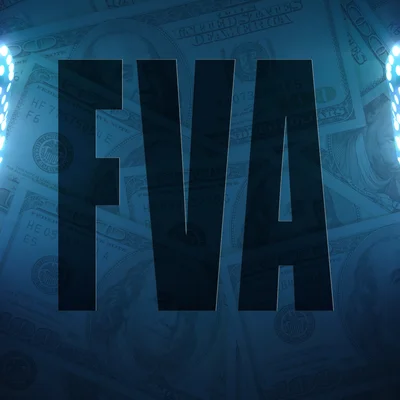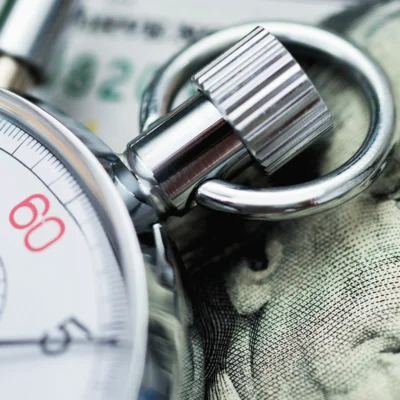

Review of 2020: chaos on a roll
Vanishing liquidity, the Ronin collapse, broken backtests, XVAs – the pandemic wreaked havoc in risk transfer markets
The Covid-19 pandemic brought the financial system to the brink in 2020. Lockdowns turned cities into ghost towns overnight and economic activity ground to a halt. From hastily assembled home offices, market participants faced one crisis after another: equity volatility surged; the US Treasury market seized-up; and oil futures turned negative.
At times, it felt like a year-long crisis was being squeezed into six weeks. CME Group pulled the plug on one of the world’s largest proprietary trading firms. Dealers incurred heavy losses in their structured products books. Some hedge funds were unable to see out the turmoil.
Central banks had to step in with massive lifelines to pull the system back from collapse. The market now faces a prolonged period of low interest rates and the eventual withdrawal of central bank liquidity. But that is a problem for another day.
Amid the chaos, regulators kept up the pressure to transition $350 trillion of Libor-linked financial contracts to new benchmarks. After suggesting Libor’s fate could be sealed before year-end, officials delivered an 11th-hour reprieve. A deal was brokered to continue publishing the most widely used US dollar Libor rates until mid-2023. The delay proved costly for hedge funds that had put money on an earlier transition.
Here, we look back at some of the biggest Risk.net stories from a year that many may prefer to forget.
LIQUIDITY VANISHES

Oil and stock prices were the first to drop when pandemic fears gripped the market in early March. But an even bigger crisis was brewing in the bond market. During the week of March 9, panicked investors began dumping US Treasuries in a frantic dash for cash. With few buyers willing to take the other side, prices moved rapidly.
The stress spread through the system. Hedge funds had loaded up on cash/futures basis trades – buying US Treasuries and hedging them with futures. The trade returns a profit when prices converge. But the wave of US Treasury selling caused the opposite to happen – bond prices fell further behind futures. On March 11, the trade is said to have registered a 20% mark-to-market loss. Scores of hedge funds hit their stop-loss limits, setting off a mass unwind of basis trades.
The scale of the selling – hedge funds offloaded at least $90 billion of US Treasuries that week – quickly overwhelmed dealer capacity. By March 13, the US Treasury market was on the verge of breaking down. On March 15, the US Federal Reserve intervened, pledging to purchase at least $500 billion of US Treasuries to stabilise the market.
The cash/futures basis snapped back in a matter of days. The hedge funds had been bailed out, along with the wider market. Now, they may face a reckoning. In July, former Fed chair Janet Yellen spotlighted the role hedge funds played in the market mayhem. In November, US president-elect Joe Biden named her as his nominee for Treasury secretary. Greater scrutiny of hedge funds and other non-bank financial players may be coming in 2021.
“It’s quite a day. Liquidity has been terrible” – a derivatives trader at a large US insurance company (Bonds and swaps struggled in virus volatility, March 11)
“Some dealers have completely pulled back. There are a few who remain willing to quote, albeit at much wider levels” – a swap trader at a large asset management company (Swaps liquidity slumps as Treasury stress spreads, March 12)
“If the US Treasury market is functioning with friction, then that needs to be corrected immediately,” – Gautam Khanna, senior portfolio manager at Insight Investment (US Treasury market holds its breath after high drama, March 13)
“If the Fed hadn’t come in when they did, at some point, in theory, every hedge fund could have had to stop themselves out” – EG Fisher, Mariner Investment Group (Bailed-out basis traders face regulatory backlash, October 28)
PROP GIANT, FELLED

The largest financial failure of the Covid-19 crisis played out in confusing fashion.
On March 20, CME Group revealed it had auctioned off the cleared interest rate derivatives portfolios of Ronin Capital after determining the Chicago-based proprietary trading giant could no longer meet its capital requirements. Then, on March 26, ABN Amro announced a $200 million clearing loss linked to one of its US clients.
ABN cleared trades for Ronin, and there was speculation the losses had emanated from there. The reality turned out to be more complex. On March 27, Risk.net broke the news that a hedge fund called Parplus Partners was responsible for ABN’s losses.
Parplus had close ties to Ronin. It was founded in 2017 by a former Ronin employee, James Carney. Ronin’s principals and affiliates had investments in Parplus and a trading outfit owned by Carney – called Wolo Group – was an equity member of Ronin and traded on its proprietary account.
The exact nature of the trades that got Ronin and Parplus into trouble – and how their ties affected the outcome – remains unclear. Both firms are thought to have sold volatility on the S&P 500. Those trades were cleared at the Options Clearing Corporation, with ABN acting as the clearing broker. Volatility more than doubled when the coronavirus outbreak slammed markets in March. ABN liquidated Parplus’s positions, incurring a $200 million loss. But it allowed Ronin to trade out of its positions, under close supervision, averting further losses. However, the losing volatility trades appear to have drained Ronin’s capital, taking it below CME’s minimum requirements and triggering the liquidation of its vast fixed income portfolios.
Ronin shut up shop a few months later. The results of CME’s auction were never disclosed.
“I think it’s the same space that Ronin lost money in, in Vix products, but I think it’s a different firm” – a Chicago-based prop trader (ABN winds down Ronin books after Vix losses, March 26)
“The client had a specific strategy, trading US options and futures, and failed to meet the minimum risk and margin requirements” – statement from ABN Amro (Hedge fund Parplus said to be source of ABN’s $200m loss, March 27)
“If there was a loss, and somehow member default contributions had been impacted, it would have been a complete disaster for CME” – head of risk at a US FCM (The mysterious disappearance of a Chicago trading giant, April 30)
“Most employees have been let go. Some traders have found other shops” – a source close to Ronin (Ronin, felled prop giant, shuts up shop, August 28)
AUTOCALAMITY

As Covid-19 spread across Europe and the Americas in March, equity markets tumbled 35% in three weeks – the fastest drawdown of that scale in history – while correlation realised at all-time highs.
Autocall issuers had their hands full covering their short volatility and correlation positions as the cost of those hedges soared. They also faced a brand new risk. With the pandemic shutting down most businesses, scores of companies cancelled previously announced dividends. Structured product issuers hedge some of their dividend exposure, but upcoming dividends from prior-year earnings were assumed to be guaranteed.
That was a painful mistake. BNP Paribas disclosed a €184 million hit in the first quarter, relating solely to dividends cancelled at the behest of European authorities. Societe Generale took a €400 million hedging hit in the first half, while Natixis wrote down €273 million.
The severity of the losses prompted a major review of structured product lines. Some banks stopped selling products at the riskier end of the spectrum, such as multi-underlying ‘worst of’ bonds. Natixis and SG signalled a possible retreat from the business in the aftermath of the losses, although the latter has since said it is not planning to sell off any portfolios.
“We’re through peak vega now on the Eurostoxx” – an equity derivatives strategist at a European bank (Autocalls hit peak vega where hedging costs mount, March 16)
“On the announced dividends, this risk never materialised and no-one could think of something that brutal” – a trader at Societe Generale (How axed dividends left SocGen in a €200 million hole, April 30)
“We will consider any opportunity to de-risk the portfolios we don’t want to keep, so if there is a possibility to sell, we will consider it” – Severin Cabannes, Societe Generale (SocGen mulls sale of structured products books after big losses, August 5)
“I don’t think the autocallable product itself is a problem, but I think the worst-of products are the ones that need to be revised” – Gauthier Amiot, UBS (Autocalamity: can hit product be reinvented?, September 22)
END OF HISTORY

The Covid-19 pandemic forced quants to confront one of the central tenets of their profession.
Quant finance is built on the assumption that data from the past contains clues about the future. Models are created using backtests, which show how they would have performed during periods of history. Covid-19 turned that on its head. The pandemic was a crisis unlike any other in modern times. And the future suddenly looked very different from the past.
As the year wore on, quants began adjusting to this new reality. Some played down their reliance on backtesting, turning instead to stress tests and Monte Carlo simulations to understand how models might behave in unexpected conditions. Previously fringe techniques, such as agent-based modeling and nowcasting, gained new adherents. Some predicted a shift to more iterative, experimental approaches to model development. Arguably the most disruptive idea is to use machine learning techniques to generate vast quantities of realistic but fictional datasets, which can then be used to build and test models. If they work as advertised, these so-called market generators may finally release quants from the shackles of history.
“If you have a good market generator, you can run a million different markets that we don’t have in practice” – Jean-Philippe Bouchaud, Capital Fund Management (To model the real world, quants turn to synthetic data, April 27)
“Behavioural finance has become more mainstream, and lab experiments offer invaluable testbeds for its theories” – Cary Frydman, USC Marshall School of Business (The scientists probing the human mind for an investing edge, July 2)
“Backtesting based on what was going on over the last 10 to 20 years is next to useless” – Alexander Lipton, Sila (Broken backtests leave quant researchers at a loss, October 6)
CME’S OIL SLIP

In April, the price of West Texas Intermediate (WTI) oil futures traded at CME turned negative for the first time. To its credit, the exchange had anticipated this possibility. In an advisory notice sent to clearing members on April 8, CME outlined a plan to switch from the Black-Scholes model for options pricing – which cannot handle negative prices – to the Bachelier model if prices approached zero. But the execution left much to be desired.
The exchange’s plan called for the switch to be made if oil futures settled below $8 a barrel in any delivery month. Those carefully laid plans were quickly overtaken by events. On a historic day of price action on April 20, front-month WTI crude futures dropped from $14.80 to -$38.10 a barrel, before recovering to end the day at $1.40 – unceremoniously triggering the change in valuation methodology. WTI futures went into negative territory again the following day, hitting -$8.50 a barrel, before recovering to end the day at around $11.
Clearing members were incensed by the timing of the model change. Banks worked around the clock to replicate CME’s methodology in their internal systems. Margin statements to clients were delayed several hours.
While methodologically similar, the models make different assumptions, have different inputs and produce different outputs. Bachelier spits out higher prices for out-of-the-money puts than Black Scholes, and lower values for out-of-the-money calls. This added to the chaos, as options traders scrambled to recalibrate their models while the market tanked around them.
The volatility also provoked a backlash against exchange-traded funds (ETFs), which were blamed for exacerbating the price moves. Some swap counterparties cut ties with them. Clearing brokers ordered ETFs that invest directly in futures to reduce exposures and diversify their holdings. By the summer, several ETFs were either winding down or rethinking their strategies.
“Why were they not better prepared for it? It’s not like it’s only in the last 48 hours that people realised oil prices could go negative” – a source at a large futures commission merchant (CME was ill-prepared for negative oil prices, FCMs say, April 23)
“If you have options at strike zero, the model you use will make a big difference. Black-Scholes will say it’s worth zero while Bachelier would see some value, so the hedge ratio would be completely different” – Frédéric Muller, Engie Global Energy Management (Bachelier – a strange new world for oil options, May 18)
“In accordance with its contractual rights, Shell has decided to terminate this swap agreement with WisdomTree Oil Securities” – a WisdomTree spokesperson (WisdomTree shuts oil ETPs after Shell terminates swap deal, May 21)
“Theoretically, we know oil can go negative, but watching that on a screen was a new experience for risk management teams and banks. Everyone’s taking risk mitigation techniques right now” – Nitesh Shah, WisdomTree (Oil funds want to reduce risk. Will investors let them?, July 8)
XVAS HAUNT DEALERS

Some of the biggest Covid-19-linked losses disclosed by banks came not from their lending or trading operations, but in the form of derivatives valuation adjustments, or XVAs. In the first quarter, Bank of America, Goldman Sachs and JP Morgan reported combined FVA losses of almost $2 billion, with other dealers also recording large losses.
This caused some grumbling in the industry. FVA reflects the costs and benefits that arise when uncollateralised derivatives are hedged with cleared trades. A dealer that is in-the-money on a client trade will not receive collateral but will still have to post to its hedge counterparty, generating a funding cost. Dealers say FVA is essentially unhedgeable, and some now want to see it removed from earnings statements to avoid additional P&L volatility in times of stress.
There is some precedent for this. In 2016, accounting standard-setters agreed to move DVA, which measures own-credit quality, into other comprehensive income (OCI) in earnings statements, after dealers complained it was causing big two-way swings in P&L. If dealers have their way, FVA could follow suit.
European banks also struggled with CVA charges, which came to represent a majority of market risk-weighted assets at some firms. This was largely because FX and interest rate hedges linked to CVA count towards market RWAs under European capital rules. Dealers called for them to be exempted from capital, along with credit hedges, in line with other jurisdictions. Those calls fell on deaf ears, and some European banks are now overhauling their market risk models to deal with the problem themselves.
“I don’t think I’ve seen such a brutal move in the asset swap spread, certainly since we turned on FVA – if ever” – head of the XVA desk at a large bank (FVA losses back in spotlight after coronavirus stress, April 16)
“[CVA is] a very significant proportion of our market risk RWA. I would even say it’s actually the majority” – CVA head at a European bank (European banks seek capital relief for CVA hedges, April 28)
“Getting model change approval is quite a drawn-out process, and clearly in times of stress and crisis – which we find ourselves in now – more timely decision-making is necessary on behalf of competent authorities” – Gregg Jones, International Swaps & Derivatives Association (Dealers eye model change to cure CVA capital headache, July 23)
“In March, it became clear that focusing on individual risks wasn’t an option in this market environment, given the very fast movement of the underlying risk factors” – Max Maier, LBBW (CVA desks arm themselves for the next crisis, August 24)
“It seems like the worst of both worlds at the moment, as you have P&L volatility on something that is actually unhedgeable” – Ian Harris, Credit Suisse (Funding pain prompts calls to rehome FVA, November 5)
UNTOUCHED BUFFERS

One of the ideas behind the Basel III reforms was that banks should build up capital buffers in good times and then use them to support lending in the bad times. In practice, banks proved reluctant to run down their buffers after the coronavirus hit. Capital levels remained stable. Some even increased.
So what happened? Banks say they simply haven’t seen the demand – or the losses – to deplete their capital buffers. This is not unusual in a crisis. Demand for loans tends to fall during downturns, as customers enter survival mode and pull back on investments. Those in need of cash injections turn first to government loans and other emergency facilities. This makes it difficult for banks to expand their balance sheets.
Regulators seem to think there is more to it. Some are looking at ways to tweak their capital frameworks to encourage greater use of buffers. European rules prohibit banks from making payments to shareholders and senior management if their capital ratios drop below certain levels. Those restrictions may have made banks hesitant to run down their buffers during the coronavirus crisis. Bank regulators in the UK are proposing to relax those rules, and the European Central Bank has indicated it may follow suit.
A more radical argument is that banks did not tap their buffers because they were not big enough to make a difference. An October report from the European Parliament recommends increasing the maximum level of the countercyclical buffer from 2.5% to 4% – an outcome that is unlikely to go down well with banks.
“There could be a little reluctance to go into the buffers, which is really a test also for the new regulatory framework” – Andrea Enria, European Central Bank (ECB’s Enria unsure banks will dip into capital buffers, May 28)
“The PRA has demonstrated to everybody’s complete satisfaction that it can stop UK banks from paying dividends just by telling them not to” – Simon Gleeson, Clifford Chance (Hit the buffers: EU’s dividend ban overshadows reform effort, November 18)
“From our perspective of determining credit ratings, regulatory requirements [are] one thing, but we also look at the ability of the banks to rebuild the buffers swiftly” – Claudia Nelson, Fitch Ratings (Buffer stops? Why banks haven’t used Covid capital relief, November 30)
DON’T BE A SA-CCR

As part of its regulatory response to the pandemic, the US Federal Reserve allowed banks to start using the standardised approach to counterparty credit risk (SA-CCR) ahead of schedule.
Banks had lobbied hard to replace the existing method for calculating counterparty exposures, and giving them the chance to implement SA-CCR early was seen by regulators as a form of relief during the pandemic. But only one bank took them up on the offer – Bank of America made the switch on June 30. Perplexed by the lack of take-up, supervisors started calling other banks over the summer to ask why they were still using the old model for counterparty credit risk.
The answer should not have come as a surprise. While SA-CCR lowered leverage exposures, it also increased risk-weighted assets for many business lines. An official impact assessment by US regulators had predicted a 5% rise in RWAs under the new rules. US banks must use the outputs of standardised models as a floor for their overall RWAs. Adopting SA-CCR raised these output floors and prevented RWA-constrained banks from using internal models to achieve capital savings.
As year-end approached, no other US banks had made the switch to SA-CCR. The industry is now lobbying regulators to amend it before it becomes mandatory on January 1, 2022. Their wish-list includes the removal or amendment of a 40% add-on to exposures and tweaks to the way netting sets work.
“SA-CCR creates new winners and losers from the portfolio and firm perspective” – a source at a large US FCM (Leverage ratio squeeze hits options trades, May 7)
“We see SA-CCR as something that is also imperfect, but by and large the transition to it is something that works very well for the cleaning business” – head of FX prime brokerage at a US bank (SA-CCR adoption may spur wider FX swaps clearing, July 8)
“From the numbers we look at [we] will be hit pretty hard by SA-CCR. It was supposed to be favourable for us; it’s actually going to be neutral to slightly negative” – head of clearing at a large US bank (BofA becomes first EU bank to adopt SA-CCR, September 8)
“The majority view is that SA-CCR in its current form is not delivering due to the conservative calibration” – Panayiotis Dionysopoulos, Isda (SA-CCR proves a bitter pill for US banks to swallow, December 3)
DEATH NOTICE

Traders who usually speculate on the level of interest rates or currencies found something new to bet on this year – the timing of Libor’s death. It turned out to be a rough ride.
As the coronavirus raged, there were calls for the timelines to be extended beyond the end of 2021. Instead, regulators turned up the heat. Speaking on a Risk.net webinar on June 22, a senior official at the UK’s Financial Conduct Authority (FCA) said an announcement on the cessation of Libor could be made before the end of the year. Such a declaration would lock in a five-year lookback period for calculating a spread adjustment designed to smooth the transition of derivatives contracts to new rates.
The market reaction was immediate. The so-called 3s/6s basis, which is one of the ways traders bet on the expected spread between Libor and its replacement rates, widened by around 20% in the space of the week.
Basis spreads remained elevated through much of the year, as all signs pointed to a timely transition. Then, the mood suddenly changed. On November 10, a senior Fed official acknowledged that segments of the US market would struggle to meet the end-2021 deadline for transitioning away from Libor. On November 30, Libor’s administrator confirmed it had reached a deal with regulators and banks to continue publishing the most commonly used US dollar rates until at least mid-2023.
The news caused the 3s/6s basis to narrow by nearly 30%. The reversal is said to have cost speculators up to $2 billion.
“We know Libor will continue until end-2021, but announcements about the discontinuation from the end of 2021 of Libor settings could come as early as November or December this year” – Edwin Schooling Latter, FCA (Libor death notice could be served this year – FCA, June 22)
“It is not fully appreciated in the market that the fallback spread is determined at the time of the cessation announcement, not when the cessation is effective” – a fixed income trader at a large US bank (Shifting Libor fallback window jolts basis market, June 25)
“In any market where you’re lopsided and the information comes out to the opposite, to get out of it, you’re going to have a pain trade, and some dealers and funds took a bath” – a treasury head at a European bank (How hedge funds lost big on US dollar Libor delay, December 8)
BIG BANG

The US dollar swaps market took a huge stride towards adopting the secured overnight financing rate (SOFR) in October, when CME and LCH began using the new risk-free rate to value cleared trades and pay interest on cash collateral.
The so-called ‘big bang’ discounting switch proved to be a complex operation. The changeover altered the discount risk sensitivity of cleared portfolios. This was rectified via a distribution of SOFR/Fed funds basis swaps, which swap holders could then offload at auctions arranged by the clearing houses. Ahead of the switch, there were concerns that a deluge of one-sided risk could scupper the auctions and derail a key milestone in the Libor transition. In the event, the big bang went off without a hitch. The market had passed a major operational test in the middle of the pandemic.
The ultimate aim of the switch was to embed SOFR in the financial infrastructure and catalyse liquidity in the new rate ahead of Libor’s demise. It had the desired effect – more than $25 billion of SOFR swaps notional hit the market on the CCP auction dates, making them the largest SOFR trading days on record.
“The balance of feedback from the market to us has been that in these unique circumstances a short delay is prudent” – Susi de Verdelon, LCH (Clearing houses postpone euro discounting switch to July, April 17)
“Ahead of year-end 2021, when the industry needs to be ready to implement fallbacks, the discounting switch is the only real test of operational readiness” – Guillaume Helie, Goldman Sachs (SOFR discounting – CCPs prepare for make or break auctions, September 14)
“We had very strong participation from the members, with deep amounts of tight bidding giving a really good result” – David Horner, LCH (CCP discount switch drives record SOFR swap volumes, October 21)
Only users who have a paid subscription or are part of a corporate subscription are able to print or copy content.
To access these options, along with all other subscription benefits, please contact info@risk.net or view our subscription options here: http://subscriptions.risk.net/subscribe
You are currently unable to print this content. Please contact info@risk.net to find out more.
You are currently unable to copy this content. Please contact info@risk.net to find out more.
Copyright Infopro Digital Limited. All rights reserved.
As outlined in our terms and conditions, https://www.infopro-digital.com/terms-and-conditions/subscriptions/ (point 2.4), printing is limited to a single copy.
If you would like to purchase additional rights please email info@risk.net
Copyright Infopro Digital Limited. All rights reserved.
You may share this content using our article tools. As outlined in our terms and conditions, https://www.infopro-digital.com/terms-and-conditions/subscriptions/ (clause 2.4), an Authorised User may only make one copy of the materials for their own personal use. You must also comply with the restrictions in clause 2.5.
If you would like to purchase additional rights please email info@risk.net
More on Risk management
Evalueserve tames GenAI to boost client’s cyber underwriting
Firm’s insurance client adopts machine learning to interrogate risk posed by hackers
Wait in the Q: US banks hold back on tariff-related provisions
Lack of data on supply chain vulnerabilities creates challenges for early CECL adjustments
Rising systemic risk demands a new risk management paradigm
Reinsurers need insurance-linked securities to share burden of climate-related catastrophic risk
ECB removes need for governing council to approve CCP facility
New “automatic” facility will require safeguards that are “still being implemented”, bank says
Dodging a steamroller: how the basis trade survived the tariff tantrum
Higher margins, rising yields and stable repo funding helped avert another disruptive blow-up
BoE plans to link system-wide and individual stress tests
Meanwhile, ECB wants to broaden system-wide stress models to include central counterparties
Cyber insurance costs expected to rise as loss ratios worsen
Recent ransomware and tech failure events could feed through into higher premiums this year
The WWR in the tail: a Monte Carlo framework for CCR stress testing
A methodology to compute stressed exposures based on a Gaussian copula and mixture distributions is introduced







